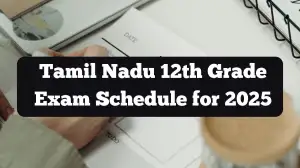PSEB Class 9th Computer Science Syllabus 2024-25
The Punjab School Education Board (PSEB), formerly known as the Punjab Board, is a state-level educational board in Punjab. For the academic year 2024-25, PSEB has released the class 9 Computer Science syllabus well in advance to give students ample time to familiarize themselves with the course content. This comprehensive syllabus outlines the units and topics students will cover throughout the year, ensuring they are well-prepared for their studies. Download the official PDF Here.
Networking
- Introduction to Networking: Need and benefits of networking; advantages and disadvantages.
- Components of Computer Networks: Clients, servers, Network Interface Cards (Ethernet and Wireless), HUB/Switch, Router, Transmission Media.
- Types of Networks: PAN, LAN, MAN, WAN.
- Network Topologies: Bus, Ring (Single and Dual), Star, Mesh, Tree, Hybrid; advantages and disadvantages of each topology.
- Data Communication: Components (Sender, Medium, Receivers, Protocol), Modes of data transmission (Simplex, Half duplex, Full duplex).
Internet Applications
- Introduction to Internet and E-mail: Basic concepts, CAPTCHA code.
- Downloading and Uploading: Definitions and examples.
- Cloud Networking and Cloud Printing: Overview and uses.
- Google Apps: Detailed guidance on using Gmail, Google Calendar, Google Maps, Google Translate, Google Docs, Google Sheets, Google Slides, Google Form, Google Sites, Google Photos, Google Lens, Google Meet, Google Play Store, and Google Drive; benefits and file sharing.
- Digital Locker: Objectives and uses.
- Internet Threats and Security: Understanding viruses, spyware, Trojan horses, phishing scams; anti-virus, anti-spyware, and prevention methods.
- Cyber Crime and Cyber Ethics: Types of cyber crimes, preventive measures, principles of cyber ethics, dos and don’ts.
Microsoft Excel
- Introduction to MS Excel: Features, common uses, starting MS Excel.
- Components of MS Excel Window: Quick Access Toolbar, Title Bar, Control buttons, File Tab, Tabs, Ribbon/Toolbar, Dialog Box Launcher, Name box, Formula bar, Scrollbars, Spreadsheet Area, Leaf Bar, Status Bar, View Buttons, Zoom Control, Active Cell.
- MS Excel Terminology: Workbook, Worksheet, Row, Column, Cell, Active Cell, Cell Address; comparison between Worksheet and Workbook.
- Working with Data: Entering and editing data, deleting data, selecting cells, using fill command, copy-paste, and fill handle.
- Working with Series: Series of Month/Day Names, Series of Numbers.
- Operations on Workbook and Worksheets: Inserting, renaming, removing, copying worksheets; creating, saving, and opening workbooks.
- Formatting in MS Excel: Text and cell styles, conditional formatting, formatting as tables.
- Inserting Rows, Columns, and Objects: Cells, rows, columns, AutoSum, charts.
- Formulas and Functions: Elements, operators, operator precedence, cell referencing, simple and advanced formulas, mathematical functions (SUM, COUNT, AVERAGE, MIN, MAX, etc.), conditional functions (IF, SUMIF, COUNTIF), string functions (LEN, LEFT, RIGHT, etc.), date functions (TODAY, NOW, etc.).
- Sorting and Filtering Data: Using the Home tab ribbon, the Data tab filters by data items, range, and color.
- Data Tools: Text to columns, remove duplicates, data validation.
- Page Layout: Setting margins, orientation, size, print area, page break, scaling, header, and footer.
- Views: Normal View, Page Layout View, Page Break Preview, Custom Views, Full Screen View.
- Protection: Protecting worksheets and workbooks.
E-Governance
- Introduction and Characteristics: Good governance, pillars of E-Governance (Connectivity, Knowledge, Data Content, Capital).
- Governance vs. E-Governance: History, development, objectives.
- E-Governance Models: G2C, G2B, G2E, G2G.
- Services: National, state, and local levels (urban and rural).
Database Management System (DBMS)
- Introduction: Data vs. Information.
- Database Terminology: Attribute, Record, Table, Database.
- DBMS: Definition, advantages, disadvantages.
- Components of DBMS Environment: Software, hardware, procedures, data, users (Application Programmers, DBAs, End-Users).
- Database Operations: Data definition, manipulation, control.
How to Get the Syllabus?
You can easily access and download the complete PSEB Class 9 syllabus for all subjects from the official PSEB website. Follow these simple steps:
- Go to the PSEB official website PSEB .
- On the homepage, locate the “Important Links” section.
- Click on the link labeled “Syllabus” in the Important Links section.
- On the syllabus page, look for the link titled “PSEB Class 9 Syllabus 2024.”
- Click on the “PSEB Class 9 Syllabus 2024” link to download the PDF file to your device.
PSEB
The Punjab School Education Board (PSEB) is a government organization in Punjab, India, responsible for school education in the state. Established on November 25, 1969, PSEB's main tasks include creating and managing the curriculum for public schools, conducting standardized exams for students, and publishing textbooks.
The board's headquarters are located in Mohali, near Chandigarh. PSEB also administers scholarships to support students financially. It is led by a Chairman, whose term is three years, and who reports to the Secretary of School Education in the Government of Punjab.
The board aims to improve the quality of education in Punjab through various initiatives, such as 'Padho Punjab,' which focuses on enhancing teaching methods and educational infrastructure. The official language of PSEB is Punjabi, and the board's activities are geared towards ensuring that students receive a high standard of education.
Disclaimer: The above information is for general informational purposes only. All information on the Site is provided in good faith, however we make no representation or warranty of any kind, express or implied, regarding the accuracy, adequacy, validity, reliability, availability or completeness of any information on the Site.




